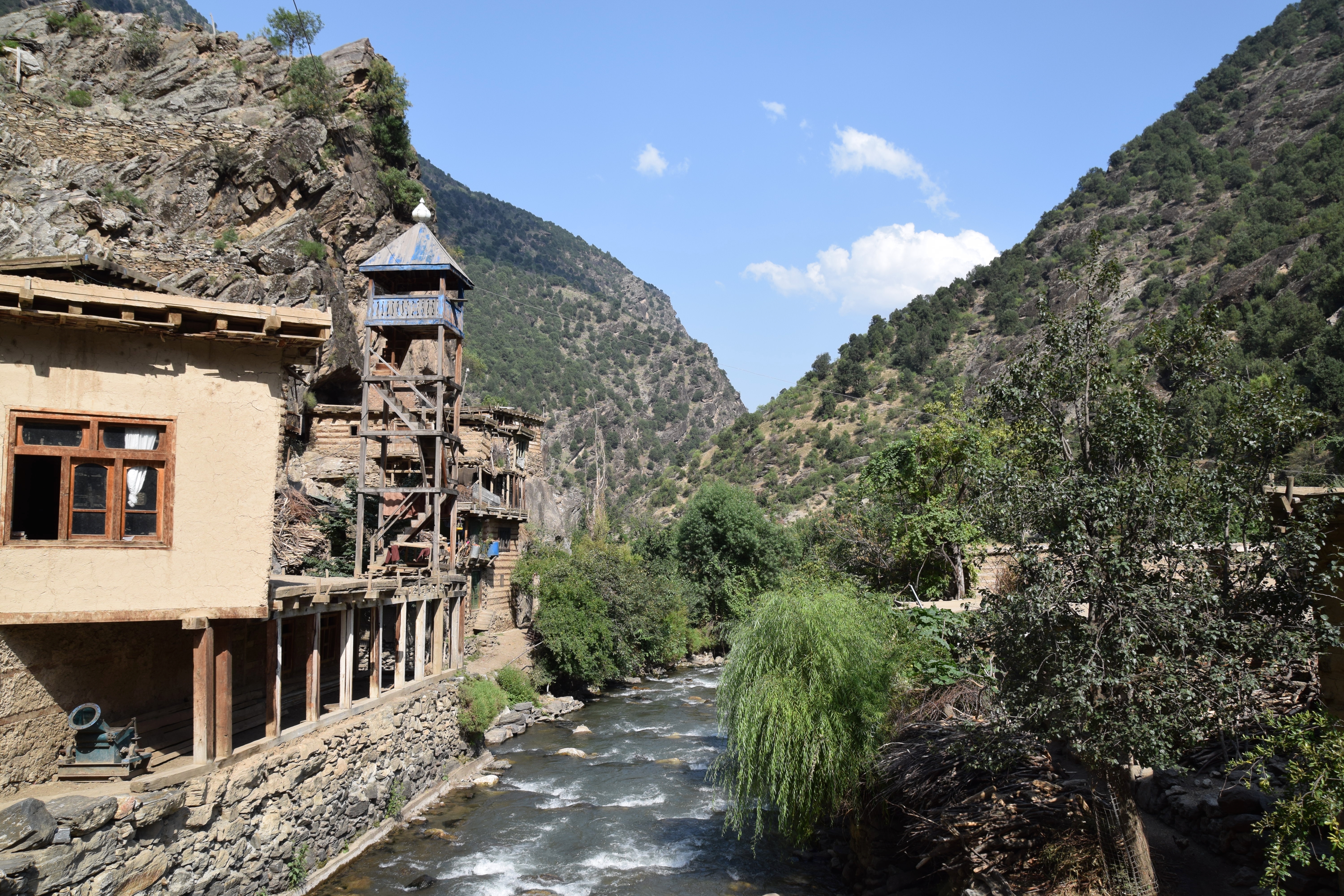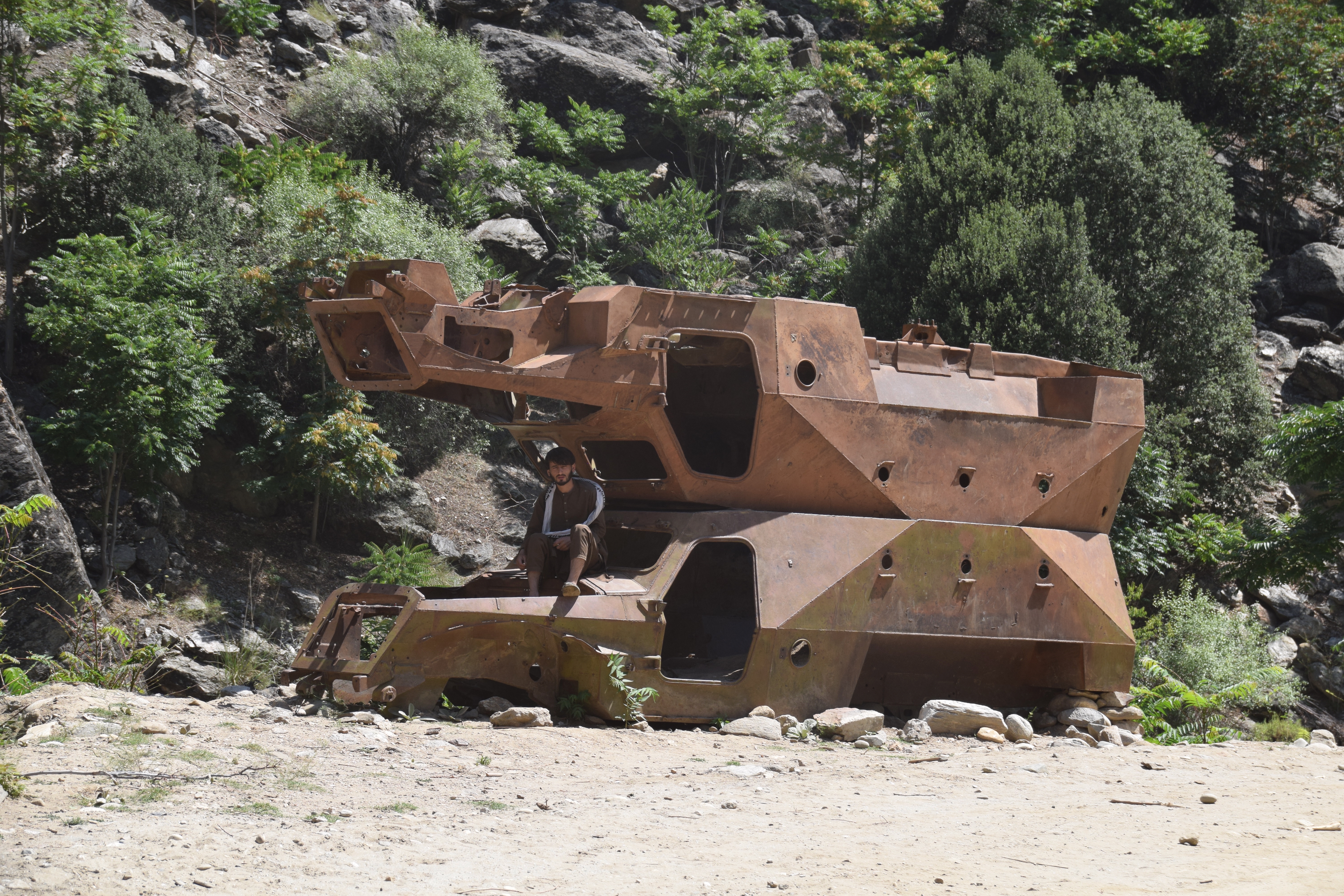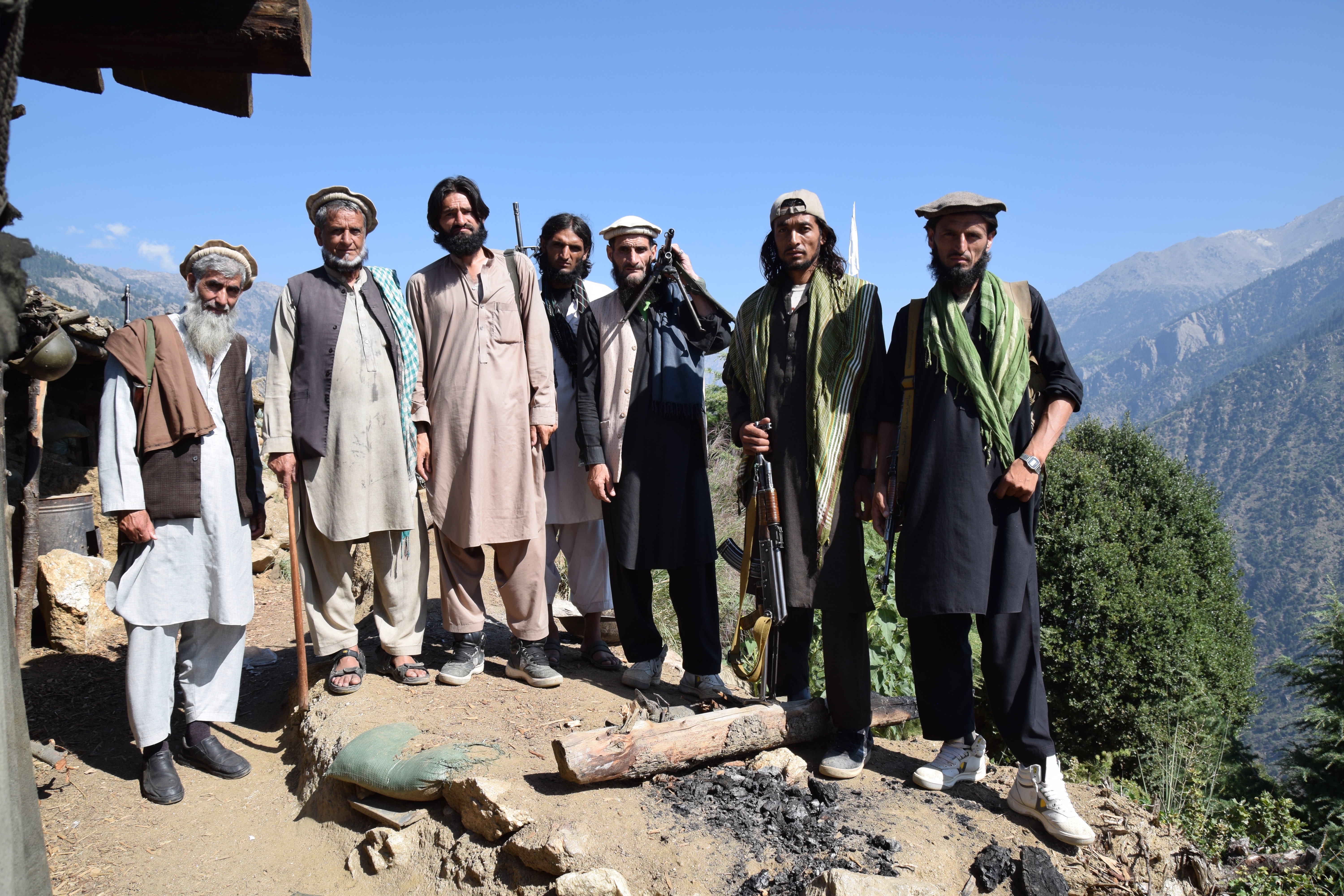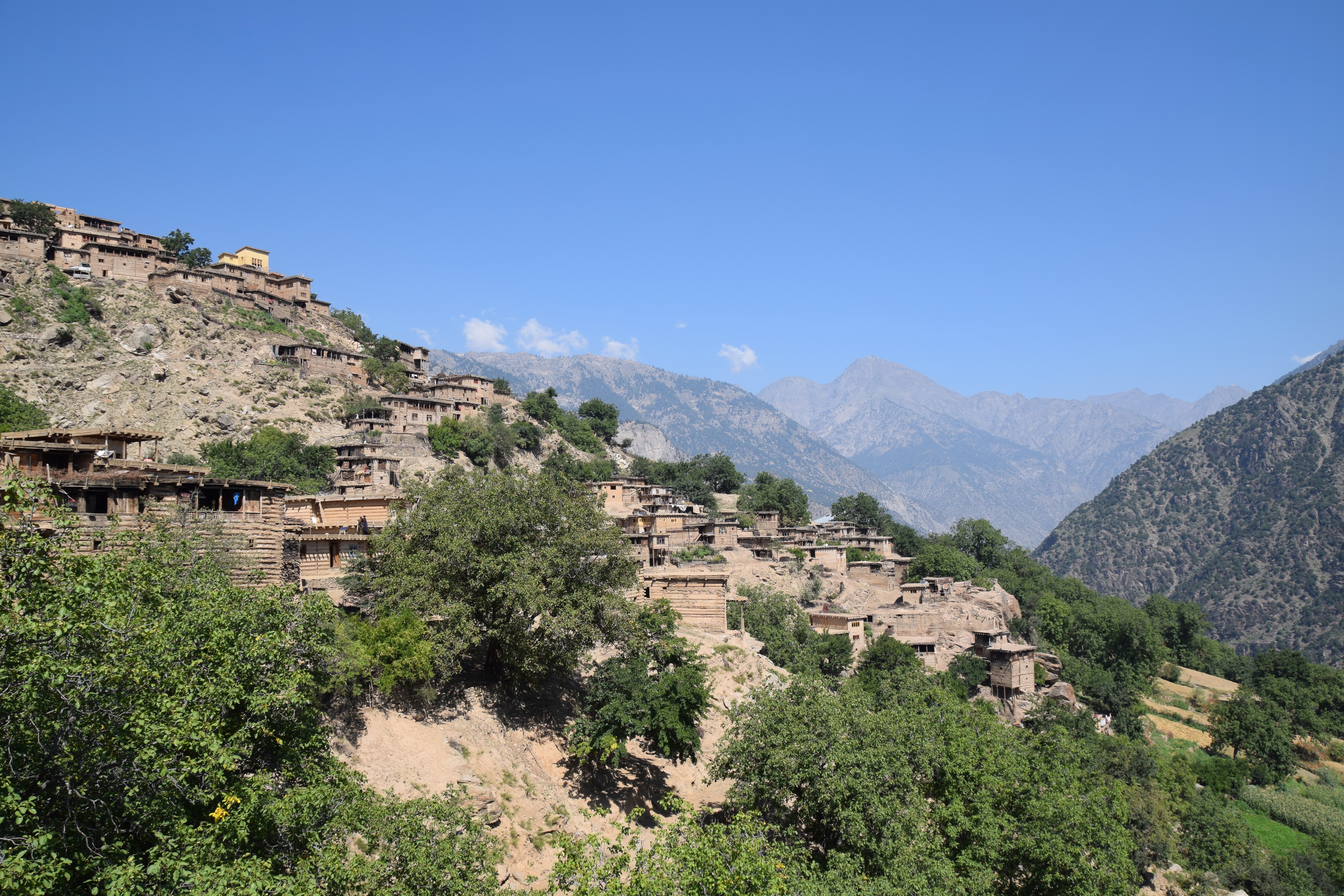KAMDESH, NURISTAN — In the dead of night on August 30, 2021, the last U.S. forces stepped off the tarmac of Kabul Airport onto a plane and left Afghanistan. It was almost 20 years after the first U.S. forces entered Afghanistan in the wake of the 9/11 attacks, to go after al-Qaida and topple the Emirate of the Taliban that sheltered them. In a twist that would have been unimaginable back in late 2001, by the time the U.S. left the Taliban again held sway in the capital Kabul and practically in the whole of Afghanistan – a feat that they did not even achieve at the prior height of their power in September 2001.
What the future holds for Afghanistan is difficult to predict and depends on what exactly the Taliban and the international community will do in the next weeks and months. However, the situation in one remote corner of Afghanistan offers a peek into the future of the whole country.
Where the U.S. Left Long Ago
While the final departure of U.S. forces literally happened overnight, and without any fanfare or even a clear announcement, the full U.S. disengagement from Afghanistan was a long goodbye. Some provinces and outposts were already abandoned years ago, like Combat Outpost Keating in Kamdesh, a district in the eastern Afghan province of Nuristan, which was vacated by U.S. forces over a decade ago, in 2009.
In several aspects, Kamdesh epitomizes the whole U.S. mission in Afghanistan. Going to Afghanistan meant going to one of the most remote parts of the world and going to Kamdesh meant going to one of the most remote spots in Afghanistan. U.S. soldiers called Kamdesh “the dark side of the moon,” and Keating was arguably the most remote outpost in the whole U.S. war effort in Afghanistan. And while the mission in Kamdesh and the larger Nuristan-Kunar region was initially to hunt down al-Qaida and their allies, it turned, over time, into something that no one could exactly describe. Indeed, a U.S. military investigation into the final days of Combat Outpost Keating concluded that “the mission devolved into one of base defense and by mid-2009 there was no tactical or strategic value to holding the ground occupied by COP Keating.” Although focusing on other valleys in Kunar and Nuristan, this devolving of the mission is excellently dissected in Wesley Morgan’s book “The Hardest Place.”
In any event, as the United States had no clear objective in Kamdesh anymore, Combat Outpost Keating had already been earmarked to be abandoned by the summer of 2009. However, logistical reasons delayed giving up Keating – and provided the Taliban with an opportunity. On October 3, 2009, an estimated 300 Taliban fighters launched a full-blown attack against Keating and, temporarily, even breached its perimeter. U.S. soldiers manning Keating, with heavy air support, eventually managed to repel the Taliban. However, with eight U.S. soldiers killed and 22 more wounded as well as over 150 Taliban casualties, it was one of the bloodiest U.S.-Taliban battles of the whole U.S. war in Afghanistan and became the subject of books (see e.g. here and here) as well as the movie “The Outpost.”
In spite of the heavy casualties the Taliban suffered, when U.S. forces abandoned Keating soon after the Battle of Kamdesh, the Taliban were again in control of almost all of Kamdesh and felt victorious – a feeling now echoing through the whole of the country, and still persistent in Kamdesh.

The view from the village of Ormor toward the place where U.S. Combat Outpost Keating used to be. Residents here have no good memories of the Americans (August 11, 2021). Photo by Franz J. Marty.
The U.S. Legacy
Although the United States deployed troops to Kamdesh at least once more, for a very short stint in 2012, U.S. involvement in the district practically ceased to exist there more than a decade ago, meaning that what is playing out in the whole country now already happened years ago in Kamdesh.
By now, barely anything of the prior U.S. involvement remains in Kamdesh. Indeed, when The Diplomat visited the site of Combat Outpost Keating in early August 2021, the few shells of Soviet armored personnel carriers left rusting there for over three decades were more prominent than anything the Americans left behind. The former Combat Outpost Keating was practically invisible. What the U.S. bombardment that followed the U.S. withdrawal from Keating did not destroy back in 2009 is now overgrown by ferns and bushes whose leaves quietly rustle in the wind. The small peninsula protruding into the white water of the Landay Sin River, where once U.S. resupply helicopters landed, is now covered in small trees.
And while one might assume that the sturdy beton bridge spanning a tributary to the Landay Sin River, connecting the place of the former combat outpost with the former helicopter landing zone, was constructed by the Americans, this is not the case. “The bridge was built during the [first] Taliban era [before September 2001] by a non-governmental organization,” explained Mawlawi Abdul Reza, a teacher at a madrassa, a religious school, who hails from Ormor, the village only a stone’s throw away from what was once Keating. Another resident of Kamdesh confirmed this.
“The Americans built nothing here; only their base which they later destroyed,” Reza added with scorn in his voice.
The latter is not entirely true, as several other solid cement bridges – one of the most important pieces of infrastructure in valleys cut through by fast flowing mountain rivers – were built in the early 2000s with U.S. aid. “Since these bridges in the early 2000s, there have been no development projects at all here,” Obaid Rahmon, a resident of Kamdesh, told The Diplomat. This is not hard to believe. Roads in the district remain unpaved and bumpy, winding through difficult terrain. Basic clinics are far and few between, and the ones that exist and are open are regularly short of doctors and medicine.
In 2020, the then-government of Afghanistan, which was largely funded by the U.S., started to build several schools in Kamdesh and Barg-e Matal, the district located upstream from Kamdesh, as Rahmon acknowledged. However, the school building that The Diplomat visited in early August 2021 remained an empty, unfinished shell and with the current uncertainties it is questionable when, if ever, it will be completed.
According to residents of Kamdesh, other promised development projects never materialized. “The Americans said they would construct a pipe system for drinking water for our village, but they never did,” Abdul Jalil an old school teacher from Ormor, told The Diplomat. “Back when the Americans where here, there were jobs here and a lot of money, but no security,” Jalil and other men from Ormor said, sitting on a wooden bench surrounded by the steep slopes peppered with small trees from which the Taliban used to regularly attack the Americans in Keating.
The Diplomat has heard similar feelings – disappointment over lack of basic developments and complaints about insecurity – in many other places across Afghanistan during the past months and years. Based on that trend, it seems likely that little of the existing U.S. investments in Afghanistan will be remembered in a few years from now.

Chassis of Soviet armored personnel carriers, rusting at the roadside next to the place where U.S. Combat Outpost Keating used to be. Despite being over three decades old, they are more prominent reminders of past wars in Kamdesh than anything U.S. forces have left behind more recently. (August 9, 2021) Photo by Franz J. Marty.
An Elusive Peace?
“With the Americans gone, the money stopped and nothing was left behind; but the security problems continued,” Jalil added, which was seconded by the others. Given that the forces of the now toppled Afghan Republic did not vacate Kamdesh along with U.S. forces, clashes between the Republican forces and the Taliban continued in Kamdesh until the complete fall of the district in early August 2021. However, when the men from Ormor mentioned their concern regarding insecurity, they were not only referring to clashes between Republican and Taliban forces in the past.
“In the past 11 years, a total of 40 houses were burnt down in Ormor. The last incident only took place 15 days ago [in late July 2021],” Jalil stated. “No one knows who is behind these incidents and why they burn down the houses,” the residents of Ormor claimed.
“The U.S. presence here has split the local people,” one man from Ormor said, “and this split exists still now, long after the U.S. left.” While his comment implied that such a split is the reason for the numerous acts of arson in Ormor, in a country like Afghanistan where longstanding violent personal, clan, or tribal enmities are frequent, there are many alternative potential explanations. Either way, there are no indications that these arson attacks will stop now after the full Taliban takeover.
That said, not everyone is concerned about the security situation in Kamdesh. To the contrary, other people who live in parts of Kamdesh that have been de facto controlled by the Taliban for a decade stated that their villages are safe and that they don’t face any security issues. In view of this, the victory of the Taliban across the country will mean security in certain, maybe even many, parts of the country, but a complete end of violent acts will likely remain elusive.

A group of Taliban in an outpost above the district center of Kamdesh, Nuristan Province. While the district center was, until early August, controlled by the now toppled Republican government, the Taliban have practically been in control of the rest of Kamdesh for over a decade. (August 12, 2021). Photo by Franz J. Marty.
Locals’ Problems With the Taliban
There are people in Kamdesh that are not too happy with the Taliban. Some people in Kamdesh contrasted the existence of job opportunities and money when Americans were around with the economic hardship they face under the Taliban.
“The extreme inflation of prices for common goods is all the Taliban’s fault,” one man with a short-cropped black beard and a pakool, the region’s traditional round felt hat, exclaimed. Given that the price hike in Kamdesh in August 2021 was mainly caused by the fact that a historic flash flood cut the only road into the district from lower Kamdesh, which disrupted supplies for the rest of Kamdesh and Barg-e Matal, this criticism was to some extent unfair. However, as examples from other areas that have been long under Taliban control show, a contracting economy and the lack of job opportunities are indeed frequently heard problems of life under Taliban rule and are now also reported countrywide.
The fact that the Taliban apparently only have limited financial resources was corroborated during the response to the flood in Kamdesh. “Some aid arrived from non-governmental organizations, but nothing from the Taliban,” a victim of the flood in the village of Mirdesh in lower Kamdesh told The Diplomat.
Other residents of Mirdesh mentioned that the Taliban had promised to help the flood victims with “5 million,” but this money had, at least as of mid-August, never arrived and it was not even clear whether the Taliban meant 5 million afghanis or Pakistani rupees. (The use of Pakistani currency is, despite an official ban, still common in a few border areas of Afghanistan.) A Taliban official was even inviting NGOs to help, while remaining silent on what the Taliban themselves would do to respond to the emergency.
Some residents of Kamdesh also complained about intrusive Taliban laws. Apart from the little island of the district center that was, until early August 2021, controlled by the former Republic, the Taliban have prohibited TVs, smoking, and music for over a decade in Kamdesh.
“While smoking and music are in theory outlawed, some Taliban smoke themselves and I and others listen openly to music without the Taliban interfering,” a resident from Kamdesh qualified this.
“However, with TVs and satellite dishes they are strict. I have asked several times to be allowed to have a satellite dish to get satellite-based WiFi, but they don’t let me,” the man added. “And this is despite the fact that the Taliban themselves regularly use the satellite-based WiFi of a shopkeeper in the center of Barg-e Matal,” which was until early August under the control of the former Republic.
This shows that Afghans are – contrary to Taliban claims – not living blissfully under Taliban rule. Given that residents of Kamdesh have been living under the Taliban for over 10 years, their voices show that complains and worries about the economy are not mere transitional issues.

The district center of Kamdesh, Nuristan province, perched high above the main valley on a mountain slope (August 12, 2021). Photo by Franz J. Marty.
Outlook
In view of all this, it is likely that, as in Kamdesh, little of the U.S. investment from the past two decades will remain across Afghanistan – and what does remain won’t be remembered as having been provided by U.S. aid. Instead, if Kamdesh offers any preview, Afghans across the country will probably continue to blame the United States for not having fulfilled its promises and – among Afghans who were amenable to the U.S. intention to develop Afghanistan into a modern state – for having abandoned them.
That said, while some are already appreciating or will appreciate the level of security provided by the Taliban, others affected by continuing acts of violence will not. And while Afghans are already worrying about the tumbling economy, this will likely further increase in the months and years to come, with the Taliban continuing to rely on international aid to fund basic services rather than try, at least partly, to tackle such problems themselves.
“We had a chance to develop our homeland, but we missed it and now more difficult days lie ahead,” one resident from Kamdesh said, by way of summing up the situation. Many other Afghans no doubt feel the same way.

































